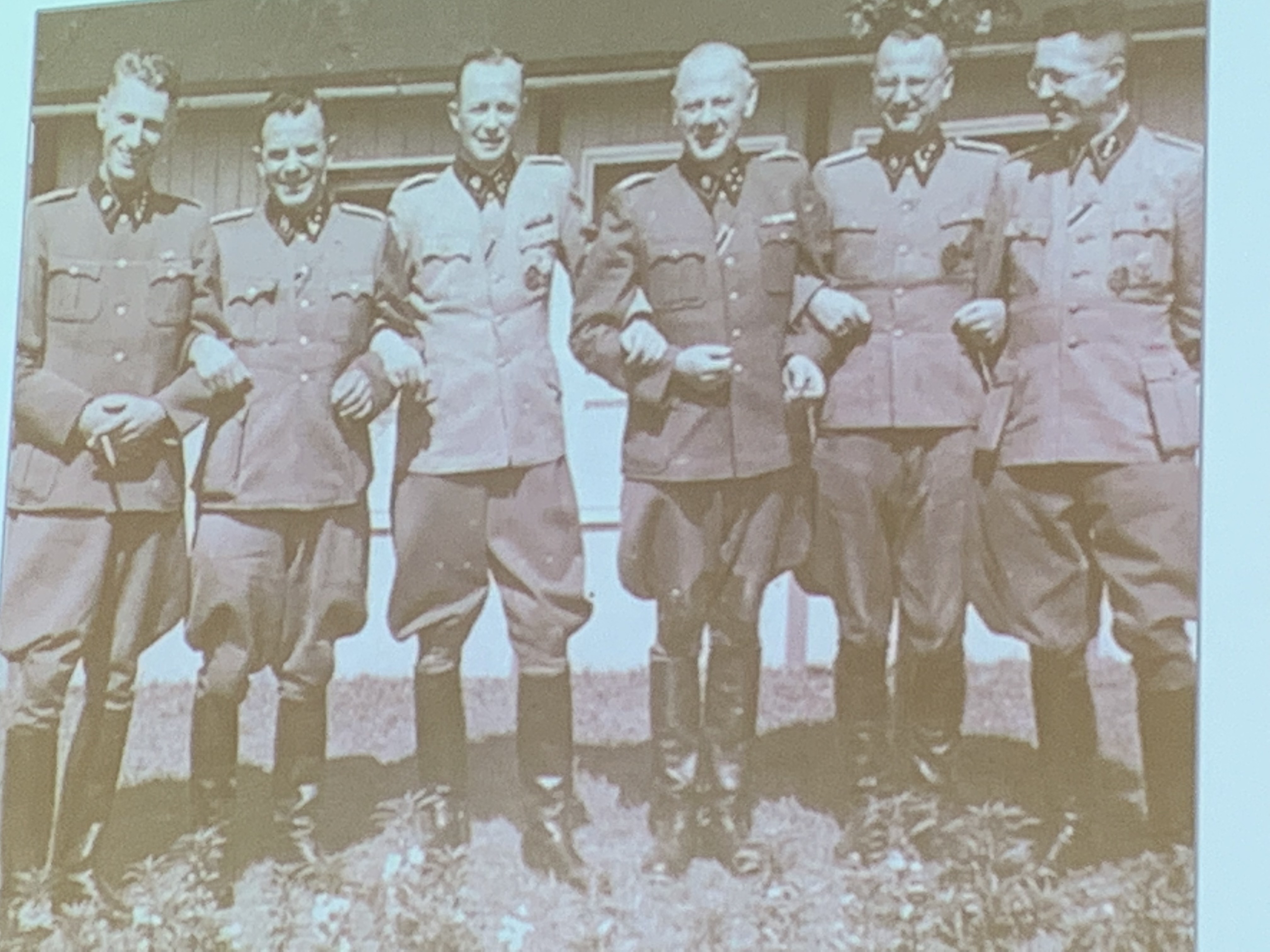Lecture: Nazis used photography to conceal the truth of life in concentration camps during the Holocaust

 Hiding the harsh realities around them, a group of concentration camp guards happily pose for the camera.
Hiding the harsh realities around them, a group of concentration camp guards happily pose for the camera. But there are other pictures, images taken inside the camps while the war still raged. Taken by official SS photographers, they show a world that mostly hides the truth of what was happening. Instead of factories of death, these black-and-white stills convey the idea that soldiers are happy and prisoners are mere criminals serving a sentence. If a lifeless body appears, it is presented as the consequence of a lawbreaker trying to escape, not as a brutal execution. It pretends to be a crime-scene photo, but it has no context: The victim is not identified, the location not revealed, which would be the case with a real crime-scene photograph.
According to Lukas Meisel, the 2018-19 Greenberg Research Fellow at the USC Shoah Foundation Center for Advanced Genocide Research, photos like those were intended not to investigate crimes, but to cover them.
Meisel is comparing these images – the ones perpetrators used to present a lie to the world – with memories of survivors in the institute’s Visual History Archive, who witnessed the truth.
He talked about his research at the Institute and offered some preliminary conclusions during a public lecture on Feb. 12.
“Testimony highlights the importance to look for counter narratives of these SS photos with the stories they convey,” he said.
 Lukas Meisel, the 2018-19 Greenberg Research Fellow at the USC Shoah Foundation Center for Advanced Genocide Research gives a public lecture at USC on Feb. 12.
Lukas Meisel, the 2018-19 Greenberg Research Fellow at the USC Shoah Foundation Center for Advanced Genocide Research gives a public lecture at USC on Feb. 12.Testimony also reveals hidden realities that the pictures don’t show.
“While photographers took mug shots of prisoners who were sent to work, they did not take pictures of those who were sent to their deaths,” Meisel said.
Using witness accounts demonstrates “the importance of integrating survivor testimony and analysis created by perpetrators to understand the other side of the picture, which is not photographed,” Meisel said.
A PhD candidate in Holocaust Studies at the University of Haifa, Meisel is spending a month while he works on his doctoral dissertation, “SS-Photography in Concentration Camps. Genres and Meanings of Erkennungsdienst-Photos.”
While providing a bogus view of life in a concentration camp, the pictures offer a glimpse into how the Nazis viewed themselves and how they wanted others to perceive them.
“What do these pictures tell us about the perspective of the perpetrators and their crimes?” Meisel asked. “What images did they want to create and convey? They are unique sources themselves when critically examined. They have the potential to reconstruct the practical and ideological aspirations of the perpetrators.”
But while they have significant historical value, these pictures fail to capture the true horror of the Holocaust, a fact that Meisel is correcting with his work.
“The violence behind these pictures become visible only when integrating the perspective of survivors, who themselves were often very aware of the lack of proper documentation of crimes,” he said. “The SS photos show the dangers of uncritical usage of these perpetrator documents, not only by antisemites and revisionists who want to distort the truth, but also by creating a false image of the camps’ reality.”
Like this article? Get our e-newsletter.
Be the first to learn about new articles and personal stories like the one you've just read.